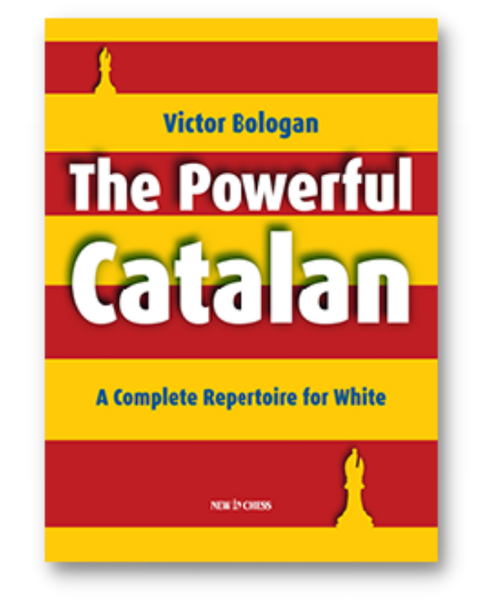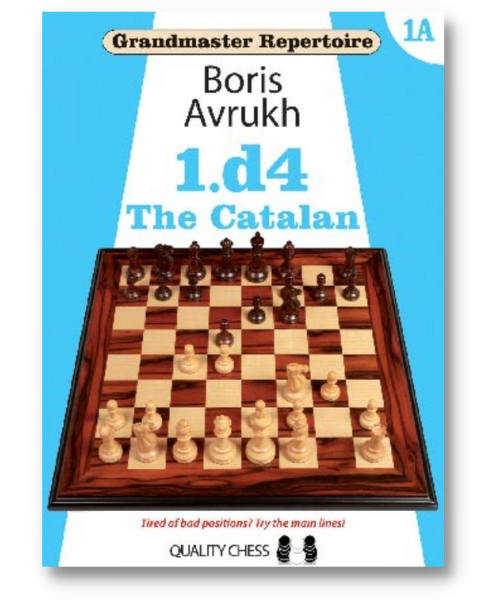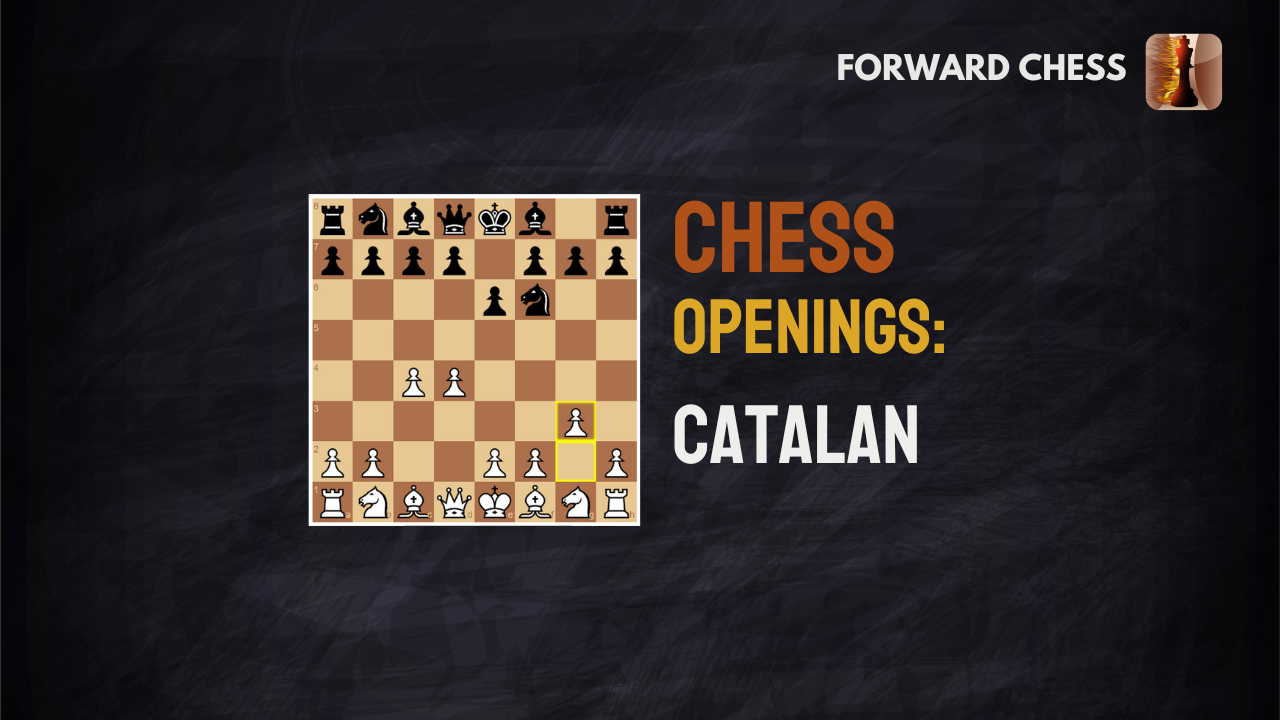The Catalan Opening is a sophisticated system that marries the Queen’s Gambit’s strategic depth with the Ruy Lopez’s finesse. Known for its flexibility and rich strategic play, the Catalan is a favorite among players who enjoy positions with a strong pawn center and the potential for subtle maneuvering and complex tactics.
White aims to control the center with pawns on d4 and c4 while fianchettoing the light-squared bishop to g2. This setup supports a strong central presence and exerts pressure on the long diagonal.
Catalan Opening: Table of Contents
- Catalan Background
- Catalan Theory
- Open Catalan
- Closed Catalan
- Learn to play the Catalan
- Books to Learn From
Catalan Opening Background
Name Origins
The Catalan Opening draws its name from the region of Catalonia in Spain, where it was popularized. It is not the result of one specific game or player, but rather a broader regional adoption in the early 20th century. The opening came to international prominence after it was used in the 1929 Barcelona tournament. The players from Catalonia employed this opening system with success, which led to its association with the region.

History
Notable champions like Alexander Alekhine and Savielly Tartakower played it around that time, contributing to its development. However, it was not until much later in the late 20th and early 21st centuries that the Catalan Opening began to be more widely adopted by top-level players, significantly shaping modern chess opening theory.
Catalan Opening Theory
As with every opening in chess, there have been so many theoretical developments that have led to MANY new lines for both sides.
Keeping it short and simple, we are going to take a look at the two main lines in the Catalan; the Open Catalan and the Closed Catalan.

In chess, the terms “Open” and “Closed” when referring to variations of an opening generally describe the nature of the pawn structure and how much the position is likely to open up for piece play.
Open Variations:
- In an Open variation, the pawn structure is more fluid, with one or more pawns being exchanged early in the game. This leads to open lines (files and diagonals) for rooks, bishops, and queens.
- Open variations are typically characterized by tactical play, as the fewer pawns on the board mean greater mobility for pieces and more immediate contact between opposing forces.
Closed Variations:
- In Closed variations, the pawn structure is more static, with fewer pawn exchanges. The pawns often block the center, leading to slower, more strategic play.
- These positions require more maneuvering and positional understanding, as players need to prepare pawn breaks or piece repositioning to create weaknesses or gain space.
Now that we have that covered, let’s get into the theory!
Open Catalan
If Black captures on c4, this results in the Open Catalan, where White often recaptures the pawn with the queen after first playing Qc2 and a4.
1.d4 Nf6 2.c4 e6 3.g3 d5 4.Bg2 Be7 5.Nf3 0-0 6.0-0 dxc4, now we enter the Open Catalan:
In cases where Black plays …dxc4 earlier, there is no need to be hasty with recapturing the pawn – White must be prepared to go without it for some time. White instead prioritizes central control and development over regaining material.
The mainline may continue: 7.Qc2 a6 8.a4
Black can aim to play Bd7-Bc6 to contest White’s strong control over the light-squared diagonal, or the natural Nc6. White will take the c-pawn, retreating the Queen on the c-file if necessary.
Closed Catalan
The Closed Catalan arises after 1.d4 Nf6 2.c4 e6 3.g3 d5 4.Bg2 Be7 5.Nf3 0-0 6.0-0 c6.
Black maintains a solid pawn structure and will develop the light-squared Bishop via b6. White usually opts for Qc2 and Nc3 with the idea of e4 in the air as well.
Learn to play the Catalan Opening
Books to Learn From

The Powerful Catalan: A Complete Repertoire for White
Publisher: New in Chess
Author: Victor Bologan


Have any questions, or opening suggestions? Let us know in the comments!
- The Power of Pattern Recognition: The Woodpecker Method 2 - August 20, 2024
- Rock Solid Chess: Volume 2 - February 21, 2024
- Unsung Heroes of Chess - February 19, 2024
